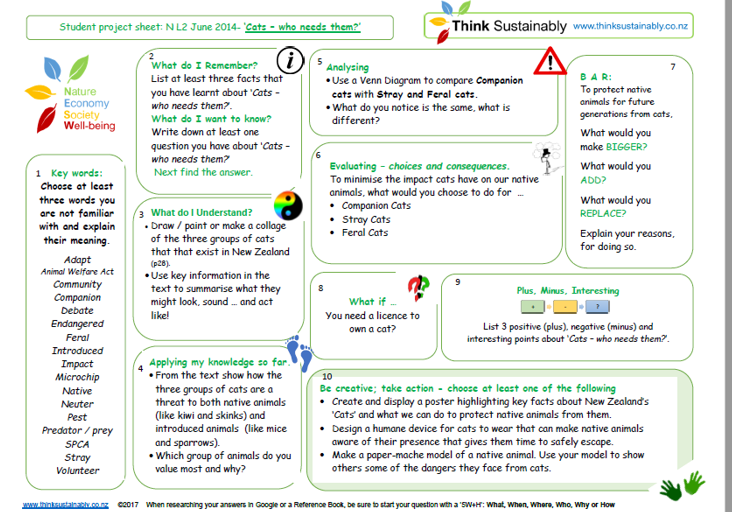Think Sustainably is based in the South Canterbury Township of Waimate, New Zealand
As teachers, we believe that to ‘Be the Change’ – you have to ‘Teach the Change’
Sustainability and Social Responsibility Resources for Curious Classrooms
Empower your students to think critically, act responsibly, and shape a more sustainable future — one lesson at a time.
Our sustainability resources are designed to integrate seamlessly with the School Journals, using real-world topics to explore key issues in both environmental and social sustainability.
Whether it’s penguins, forests, and sandflies, or themes like budgeting, bullying, equity, race, and equality, each resource brings meaningful context to your reading, homework, or topic programme.
Many topics also align with the Aotearoa New Zealand Histories curriculum, providing rich opportunities for cross-curricular learning.
Each resource follows a proven format:
10 inquiry-based questions that guide students through:
- Understanding the language and concepts of sustainability
- Thinking deeply and critically about real-world issues
- Creatively proposing solutions for a better, fairer future
These aren’t just worksheets — they’re launchpads for lifelong learning, empathy, and action.
Inspire change. Start in the classroom.
Think Sustainably – Let’s do it.
- We utilise Blooms Taxonomy and other thinking tools
- Over 50 resources (with more added regularly) that leverage off stories and articles in the school journal published by the Ministry of Education NZ.
- Wide and varied topics that cover the four pillars of sustainability: Nature, Economy, Society, Wellbeing – they’re all inter-connected.
Nga mihi nui.


‘What is meant by ‘sustainability’?
There are a number of frameworks for sustainability. The one chosen here suggests describing a sustainable future as being dependable on the interrelationships between four key areas that for simplicity’s sake can be represented by points on the compass: Nature (ecological), Economic, Social – inclusive of citizenship and a fair and equitable political system and Wellbeing – incorporating the various aspects of hauora. These four ‘systems’ can be described as the ‘pillars’ of sustainability, understanding that the health of anyone ‘pillar’ is influenced by and in turn influences the health of the others. You can read more about this topic on our blog here.
Why ‘think sustainably’ ?
In a nutshell – we need to for our children, and we need our children to ‘think sustainably’ if they are to enjoy a sustainable quality of life that those immediate generations born in developed nations post WW2 have for the most part experienced. It is often a surprise amongst many New Zealanders to learn that amongst developed nations we now have one of the most de-graded natural environments globally with approximately 80% of our native species threatened with extinction – the highest of any developed nation. In parallel with this we have some of the worst per capita social indicators amongst OECD nations including: suicide rates amongst youth; homelessness, obesity, incarceration of indigenous people, domestic violence, teenage pregnancy – amongst others. It’s no fluke that that these indicators, inclusive of economic and wellbeing, are inter-dependent. Everything is inter-connected. You can read more about this topic on our blog here.
Suggestions on how you might teach students to ‘think sustainably’.
- Whole class: This is an ideal strategy to scaffold the concept of sustainability for your students.
- Small groups: Ideal for developing co-operative skills – a key aspect of ‘thinking sustainably’.
- Independent: Students could independently read the journal text before systematically working through the 10 tasks in the student project sheet.
- As part of your reading program A variety of comprehension strategies can be utilized when reading the text.
- As a homework project.
- As a project for a day relief teacher or CRT.
You can read more about this topic on our blog here.
